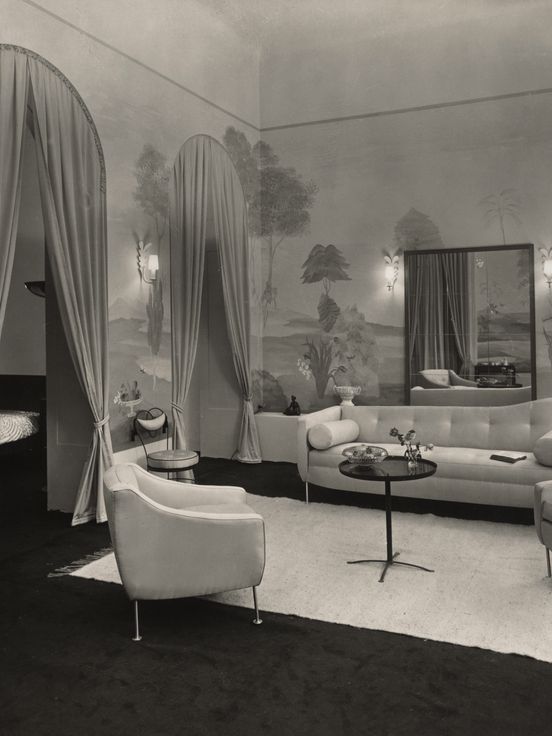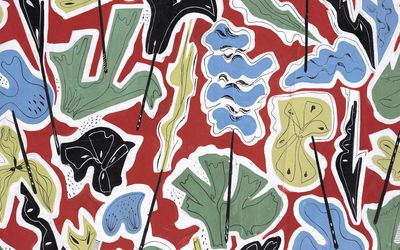Biography
Ruth Gertrud Hildegard Raack was born on 16 June 1894 at Nordhausen by the Harz Mountains. In 1913 her family moved to Berlin, where she studied painting at a “teaching facility” run by the State Museum of Decorative Arts. This school was headed from 1907 by the architect and furniture designer Bruno Paul (1874–1968), with whom the artist would later collaborate professionally. In 1920/21 she attended courses at the Bauhaus in Weimar.
Two years after her marriage on 2 September 1922 to the government official Hugo Wilhelm Hermann Geyer (1884–1975), she opened her own studio in Berlin under her new name Geyer-Raack. In 1925 she joined the Deutscher Werkbund und in 1928/29 she worked for the Deutsche Werkstätten Hellerau. Until the 1930s she undertook several study trips to Paris, then the heartland of art déco. There she met the Hungarian-born architect André Sivé (born András Szivessy) and at exhibitions she complemented his furniture designs with wall paintings of her own.
Widely known from 1928 thanks to prominent articles in such popular interior design magazines as “Innendekoration”, “Dekorative Kunst” and “Das Ideale Heim”, Geyer-Raack benefited from numerous commissions. She created interiors for country houses, public buildings and passenger liners. She also designed fabrics and wallpapers for companies such as “Deutsche Werkstätten Textilgesellschaft” (DeWeTex), the wallpaper factory “Gebr. Rasch” and “Zimmer & Rohde”. She built a reputation further afield as artistic director of the “Internationale Raumausstellung” in Cologne, where she curated a diverse cross-section of innovative ideas for the home from the avant-garde of international architecture.
As the global depression and mass unemployment took hold, fewer people were able to afford quality interior design. Geyer-Raack's order situation deteriorated. Only a few months after Hitler moved into the Reich Chancellery, she joined the NSDAP on 1 May 1933 and was a member of the National Socialist organisations NS-Frauenschaft, NS-Volkswohlfahrt and Reichskulturkammer. Despite restrictions, she was subsequently able to paint Luftwaffe buildings, for example, and to redecorate rooms in Krakow's Wawel Castle for the National Socialist jurist and war criminal Hans Frank (1900-1946). Geyer-Raack was denazified on 28 September 1948. She worked above all for the booming textile, wallpaper and furniture sectors. However, up until her death in Berlin on 19 March 1975 she was unable to replicate the success she had enjoyed in the years around 1930. Today, the artist’s work can be seen in various prestigious collections, including the Bauhaus Archive in Berlin, the Museum of Decorative Arts in Dresden, the International Design Museum in Munich, the German Wallpaper Museum in Kassel and the Art Institute of Chicago.

